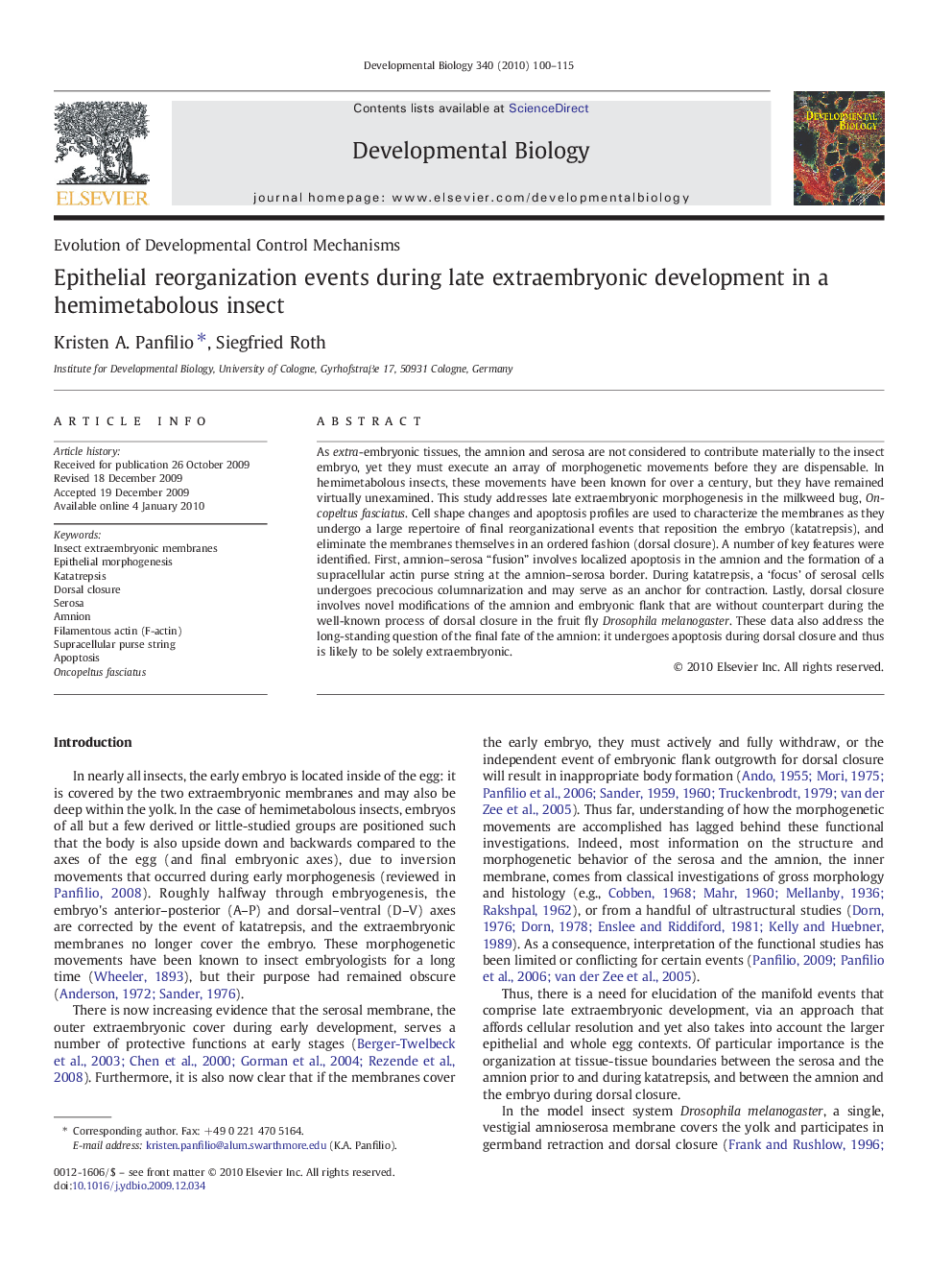| Article ID | Journal | Published Year | Pages | File Type |
|---|---|---|---|---|
| 10933129 | Developmental Biology | 2010 | 16 Pages |
Abstract
As extra-embryonic tissues, the amnion and serosa are not considered to contribute materially to the insect embryo, yet they must execute an array of morphogenetic movements before they are dispensable. In hemimetabolous insects, these movements have been known for over a century, but they have remained virtually unexamined. This study addresses late extraembryonic morphogenesis in the milkweed bug, Oncopeltus fasciatus. Cell shape changes and apoptosis profiles are used to characterize the membranes as they undergo a large repertoire of final reorganizational events that reposition the embryo (katatrepsis), and eliminate the membranes themselves in an ordered fashion (dorsal closure). A number of key features were identified. First, amnion-serosa “fusion” involves localized apoptosis in the amnion and the formation of a supracellular actin purse string at the amnion-serosa border. During katatrepsis, a 'focus' of serosal cells undergoes precocious columnarization and may serve as an anchor for contraction. Lastly, dorsal closure involves novel modifications of the amnion and embryonic flank that are without counterpart during the well-known process of dorsal closure in the fruit fly Drosophila melanogaster. These data also address the long-standing question of the final fate of the amnion: it undergoes apoptosis during dorsal closure and thus is likely to be solely extraembryonic.
Related Topics
Life Sciences
Biochemistry, Genetics and Molecular Biology
Cell Biology
Authors
Kristen A. Panfilio, Siegfried Roth,
